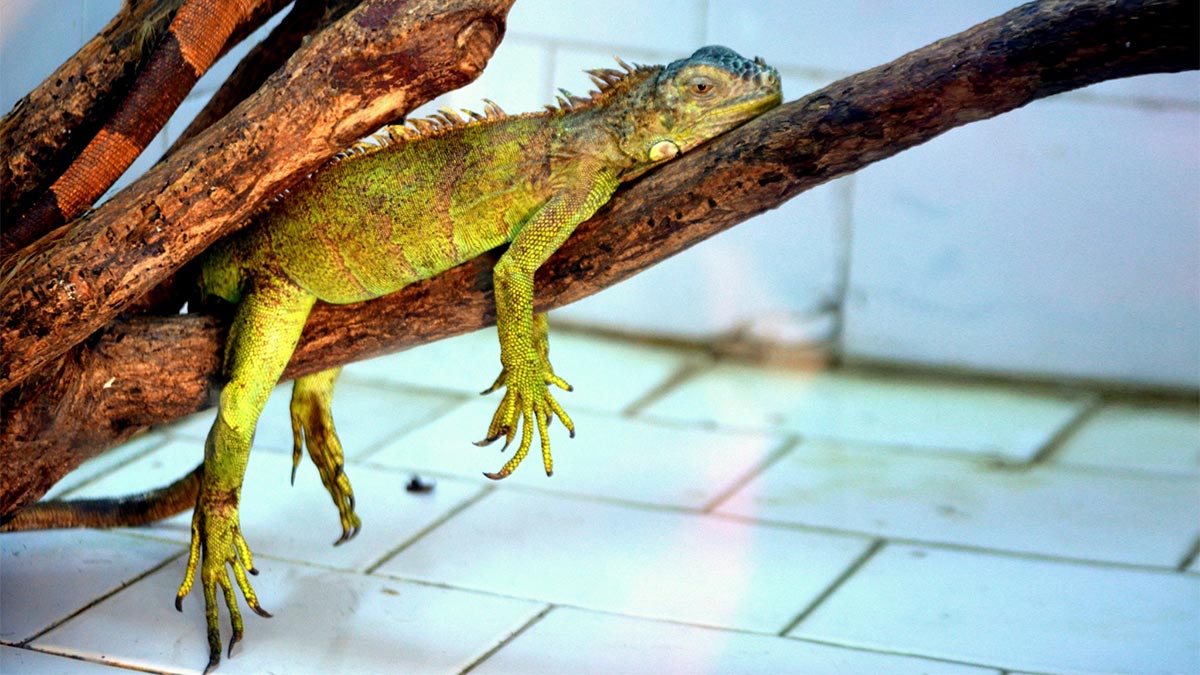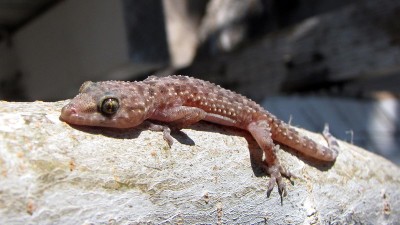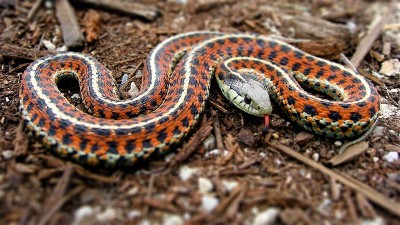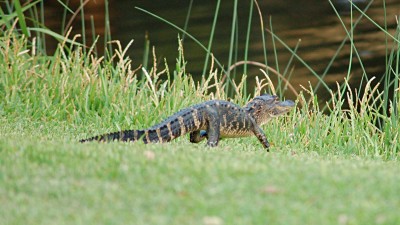
Iguanas, like all reptiles, come from eggs. The mother iguana digs a burrow in the ground to make her nest, laying about 40 to 50 eggs at a time.
This cute little guy may look familiar to you. He is a baby iguana. Iguanas in the wild have very interesting lives, ranging throughout the tropical regions of Central America and Asia, but did you know that iguanas can also make good pets?
Iguanas, like all reptiles, come from eggs. The mother iguana digs a burrow in the ground to make her nest. Typically, she lays about 40 to 50 eggs! The nest keeps the eggs safe and warm during the incubation period. When the baby iguanas are ready to hatch, it’s not instant. The process takes around seven to ten days. The hatchling scratches the egg, creating a crack or two in the shell. Then after, the hatchling goes into a resting phase. When it’s ready, the head of the hatchling will emerge, followed by another resting phase. Getting out of that shell is hard work!
After the emerging from the shell, the yolk sac will still be attached to the baby iguana’s body. Yuck! It sounds gross, but the yolk sac is important because it provides the iguana with vital nutrients. The sac will stay attached for a couple days, but then the baby iguana will need to eat food to stay alive.
Ever wonder if an iguana is a male or female? It is difficult to tell the gender of a baby iguana simply by looking at it. Once iguanas are about a year and a half old, you can start to tell the difference. Males develop differently from females. A male iguana will become flowery and more ornate than a female; some can turn gray, white, and even blue! Their jaws will become stouter and broader while their heads become wider. Further, the males develop large, round scales covering their eardrums. Females remain sleek while males become slightly broader in the pelvic area. Male iguanas develop large pores on the inner surface of their thighs and longer crests along the ridge of their spine. Watch out! Those dorsal spines are sharp!
Male iguanas can weigh close to nine pounds and grow to over five feet long, that’s as tall as some humans! On other hand, female iguanas will not grow as large. They typically grow to about four feet and weigh around three pounds.
Young iguanas mostly feed on leafy greens like mustards, collards or dandelion greens. You may think that adult iguanas like to catch insects and grubs, but iguanas mostly only eat vegetables, making them herbivores.
Caring for Baby Iguanas
Your new iguana is excited to come home with you but is nervous as well. Give your baby iguana time to adjust when placing him in his new home. He needs to get used to his environment! While researching for baby iguanas it’s best to find a great veterinarian that also treats iguanas. There will be times where you’ll need to bring them to the doctor for well treatments and sick visits, so make sure someone is in the area.
What should you feed your iguana? A variety of things! Besides the iguana food you’ll purchase from the store it’s important to provide a healthy mix of fresh fruits and veggies. Feed your iguana plant based veggies and insects. The best time to feed your iguana is in the early morning after it wakes up. Iguanas like breakfast too! If your iguana won’t eat try spraying its food with water. It’s a weird trick, but it will work.
Your iguana will need a big place to live. Cages should be large and up to six feet in length for the proper size for your iguana to thrive. Iguanas like to climb so make sure the cage is tall. They should have basking spot where the temperature is 90-95 degrees F and have both a UVA and a UVB light. They also prefer a more humid environment.


